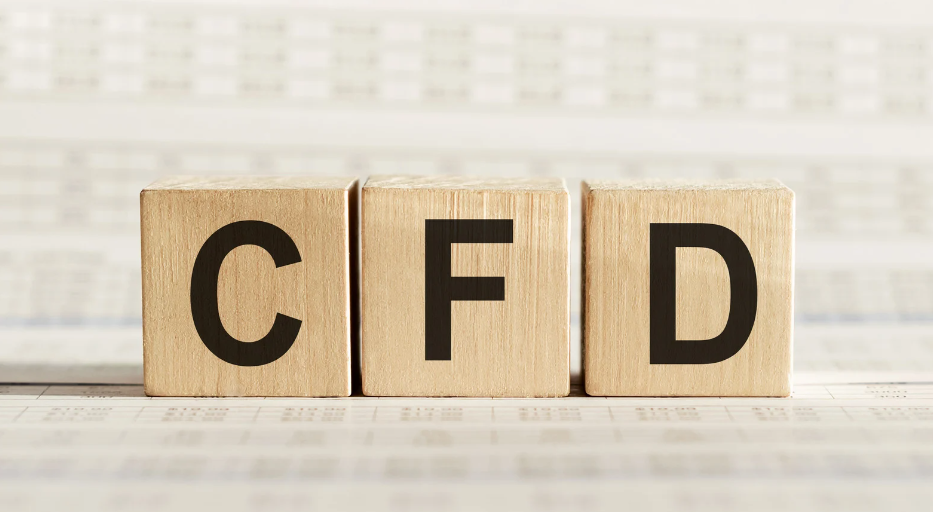Last Updated on: 24th July 2024, 04:57 am
Contracts for Difference (CFDs) have become an increasingly popular financial instrument for traders looking to benefit from price movements in various markets without owning the underlying assets.
This guide aims to demystify CFDs, explaining their mechanics, benefits, and risks straightforwardly. Whether you are new to trading or looking to expand your knowledge, this comprehensive introduction will provide you with a solid foundation to understand and navigate the world of CFD trading.
What Are CFDs?

A Contract for Difference, or CFD, is a financial derivative that allows traders to speculate on the price movement of an asset without actually owning it. The CFD meaning lies in the agreement between two parties to exchange the difference in the value of a financial instrument between the time the contract is opened and the time it is closed.
Essentially, CFDs enable traders to take long or short positions on a wide range of markets, including shares, commodities, indices, and currencies, thereby offering greater flexibility and opportunities for diversification.
How Do CFDs Work?
CFDs are based on margin trading, which means that traders only need to put up a small percentage of the total trade value as collateral, also known as leverage. The amount of leverage varies depending on the broker and the market being traded, but it can range from 1:2 to even 1:500 or more.
This allows traders to potentially earn higher profits with a smaller initial investment. However, it is important to note that leverage can amplify both gains and losses, making risk management crucial when trading CFDs.
Benefits of Trading CFDs

There are several benefits to trading CFDs, making it a popular choice among traders. These include:
- Greater accessibility: CFDs allow traders to access a wide range of markets and assets from a single trading platform, without the need for physical ownership or storage of the underlying asset.
- Leverage: As mentioned, leverage allows traders to potentially earn higher profits with a smaller initial investment. However, it is important to use leverage wisely and manage risk effectively.
- Ability to go long or short: With CFDs, traders can take advantage of both rising and falling markets by opening either long (buy) or short (sell) positions.
- Cost-effective: CFDs typically have lower trading costs compared to traditional investing in physical assets, such as stocks or commodities.
- Opportunities for diversification: With CFDs, traders can access a diverse range of markets and assets, allowing for portfolio diversification and risk management.
Risks Associated With Trading CFDs
While there are benefits to trading CFDs, it is important to also be aware of the potential risks involved. These include:
- Leverage risk: As mentioned earlier, leverage amplifies both gains and losses. While this can potentially lead to higher profits, it also means that losses can escalate quickly.
- Market risk: CFDs are subject to market fluctuations, and traders can suffer losses if their predictions about market movements are incorrect.
- Counterparty risk: When trading CFDs, traders are essentially entering into a contract with the broker. If the broker runs into financial trouble or goes bankrupt, there is a risk of not being able to withdraw funds or close positions.
- Liquidity risk: Some markets and assets may have lower liquidity in CFD trading compared to traditional investing, which could affect the ability to enter or exit positions at desired prices.
- Lack of ownership and voting rights: Unlike traditional investing, CFDs do not provide ownership or voting rights in the underlying asset. This means that traders cannot influence company decisions or receive dividends from stock holdings through CFD trading.
Risk Management Strategies for CFD Trading
To mitigate these risks, traders need to have a risk management strategy in place. Some strategies could include:
- Setting stop-loss orders: Stop-loss orders allow traders to set predetermined levels at which a position will automatically be closed if losses reach a certain point. This can help limit potential losses.
- Using proper leverage: Traders should carefully consider the appropriate level of leverage for their trading strategy and risk tolerance.
- Diversifying portfolios: Just like with any form of investing, diversification can help spread out risk in CFD trading. This can be achieved by trading a mix of different assets and markets.
- Staying informed about market events: Keeping up-to-date with economic news and announcements that could affect the markets can help traders make more informed decisions and manage risks accordingly.
Tax Implications for CFD Trading

It is important for traders to understand the tax implications of CFD trading in their respective countries. In some countries, profits from CFD trading may be subject to different tax rates than traditional investments. Traders should consult with a tax adviser or do thorough research on the tax laws in their country before engaging in CFD trading.
Conclusion
CFD trading offers various benefits such as leverage and flexibility, but it also comes with its own set of risks that traders should be aware of. By understanding these risks and implementing appropriate risk management strategies, traders can potentially minimise losses and maximise profits in this high-risk, high-reward trading environment. It is important for traders to continually educate themselves and stay informed about market events to make well-informed trading decisions.




















No Comments
Leave a comment Cancel